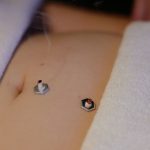All about endometriosis and some things you can do to help.

March is Endometriosis Awareness Month, a time dedicated to shedding light on this often misunderstood condition. Here at Quiescence, we are committed to helping individuals with endometriosis live their best life. We use acupuncture, herbal medicine and lifestyle changes to help reduce and manage the often debilitating pain that endometriosis can cause. These are some of our favourite lifestyle and diet tips to help you better manage endometriosis (endo) and painful periods.
Endometriosis is a chronic, progressive condition where endometrial tissue is found growing outside of the uterus. It is estimated that as many as one in ten women are affected by it and although symptoms vary from person to person, one of the main diagnosing factors is extreme pain.
Not only can the growth of endometrial tissue in the pelvic cavity cause a lot of pain, it also has the potential to to cause problems with fertility by:
- Damaging the ovaries and/or fallopian tubes thus interfering with ovulation.
- Creating a hostile environment for sperm due to activating a high macrophage response. These are white blood cells that eat foreign tissue or material, including sperm, and initiate inflammation.
- Interfering with progesterone levels in the luteal phase of the cycle.
There is no known scientific cause of endometriosis, however having children later in life, a high consumption of alcohol, chronically high stress levels and genetics are all thought to be contributing factors. Chinese Medicine considers endometriosis, and any menstrual pain, to be a stagnation of menstrual flow. This is termed Blood Stagnation and has a number of causes including:
- Cold blockage. This comes from either a lack of yang life force (burn out), or over exposure to cold through diet or the environment.
- Stagnation of Qi. It is said that Qi moves the blood, when we become stressed our Qi flow stagnates. Long term Qi stasis can in itself cause pain and eventually will result in the stagnation of blood flow.
- Damp accumulation. This usually stems from poor digestion. When we are unable to metabolize our food properly it accumulates as Dampness blocking Qi and Blood flow.
Chinese Medicine treatments aim to re-establish Qi and Blood flow and reduce pain to improve quality of life and increase fertility.
We’ve put together a list of things that you can do to manage endometriosis and menstrual pain in general. As this is not a one size fits a kinds of condition not all of these tips will be applicable to you. This is where you use your intuition and try a few things out. Listen to your body, if it feels like it’s helping it probably is.
Endometriosis dietary guidelines:

It’s important to eat foods that are simple, nourishing and won’t cause further inflammation. Bloating and uncomfortable bowels tend to inflame the uterus. During the few days before your period and during the painful days it’s important to be more diligent with your diet, outside of this time you can relax a little.
Foods to include:
-
- Warm easy to digest, nourishing foods such as soups, stews and bone broth
- Omega 3 fatty acid found in fish and seeds
- Whole grains including rice and oats.
- Lots of steamed, roasted or lightly cooked veggies, especially broccoli, Asian greens and green leafy veg
- Anti-inflammatory herbs and spices especially parsley, sage, turmeric, ginger, garlic, cinnamon, fennel seeds and cloves.
- Quality, organic protein including eggs, fish, and meat.
- Chinese medicine recognises the need to deeply replenish the body when bleeding, we recommend having at least 1-2 servings of red meat per week around menstruation.
- Plenty of our organic Raspberry Leaf tea and Energising tea
Foods that tend to cause inflammation or bloating, try to avoid:
- Raw, cold or frozen foods
- Dairy products
- Gluten
- Non-fermented and processed soy products (tofu, tamari & tempeh, are ok)
- Caffeine
- Sugar
- Alcohol
- Saturated and Hydrogenated fats
Lifestyle tips for endometriosis
- Let the menstrual blood flow out. No tampons, no sex during bleeding.
- Eat warm, nourishing foods, avoid inflammatory foods
- Stay warm. Cold constricts the blood vessels and constricted blood vessels don’t let the blood flow properly. To stay properly warm you need to keep the feet, back and belly well covered. This is important through out the month, but especially when you are bleeding.
- Avoid going out in the wind and wear a scarf to protect your neck, never go out with wet hair (it’s a cold thing).
- Rest on days of pain. Avoid strenuous exercise or demanding days but do go for a gentle walk if you can. It can help relieve pain for some women.
- Rub some clary sage oil on your back and belly and cover with a hot water bottle or heat pack/wheat bag.
- Avoid washing your hair especially when in pain (it can make the pain worse).
- Avoid swimming when bleeding (it’s another cold thing).
- Take warm baths with clary sage and Epsom salt or magnesium chloride through out the month.

In summary eat according to your constitution, stay warm and don’t over do it.
We hope you’ve found these tips useful. Please feel free to share and pass them on to the women in your life. And remember, menstruation is a time to retreat, rest and re-calibrate for all of us. Here’s to a healthy future.





